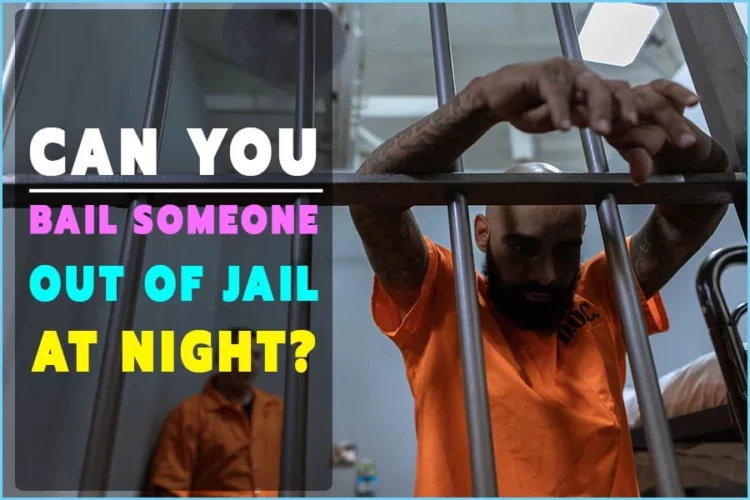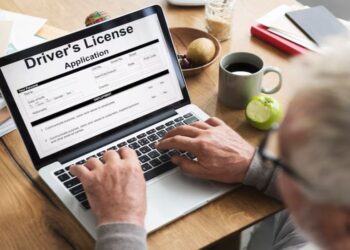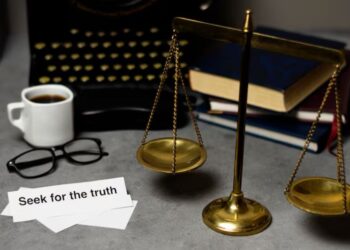You can end up under arrest at any time, and it’s not always something you are ready for. You will have more issues if you don’t understand the law and how it works in such a situation.
You need the knowledge to help you navigate the law comfortably without breaking it.
Generally, people will get bail for the defendant in the courtroom, but that isn’t always convenient.
You might not be around during business hours, and you don’t want a friend to spend the night in jail. So,
Can You Bail Someone Out Of Jail At Night?
In major cities, the clerk’s offices work for 24 hours, so you can get a person out at any time. This change will only happen after the judge has given the bail amount.
You also must have all the money with you, depending on the judge’s decision. You can go to the jail and get everything sorted out at the clerk, pay the money and get the defendant out.
How Do You Bail Someone Out Of Jail?
Before getting into anything, you need to understand how the bail process works in state and federal courts.
The bail system can vary between states, but the difference is not significant. To be safe, you should check with your local lawyers for details.
Generally speaking, this is the idea of bail. When the police arrest someone for a crime, they take the suspect to jail.
Family members or friends often want to get their loved ones out of jail. They do this by bailing the person out of jail.
The bailing process starts with a Judge who will set the bail. Sometimes the bail amount is automatic with a given charge, and you might not need to go to a judge. This automation happens mostly for minor offenses where bail could be $500 or $1000.
You can pay this money on the spot in court, get out of jail, and come back for the hearing. More frequently, a judge will set the bail. There are several ways in which the judge can do this.
For instance, if you get arrested on Friday night, you will have to wait till Monday or Tuesday to see a judge. Your attorney can talk to the judge on-call or the weekend Judge and ask them to set bail.
It will be maximum bail if you want them out over the weekend. This move is because the prosecutor isn’t around to argue about the bail. The judge will set the highest bail for that crime as a precaution.
This process is unsure since it depends on the judge on duty during that weekend. A judge could refuse to set bail for several reasons. It could be a prior history of missing court dates, flight from jurisdiction, or crimes with victims.
There will be a court hearing if the police arrest a defendant during the workdays. The prosecution and defendant will go to the judge and argue if the defendant can get bail. You might get bail, or the judge could deny it depending on the crime.
You can get other opportunities like a conditional release. Conditional means there are some rules you have to follow, but you won’t pay bail. For instance, in an assault case, you will not have any contact with the alleged victim.
You can get regular bail or conditional bail, depending on your finances. Regular bail has nothing much to it; the judge will set the amount. A defendant pays the entire sum, and they can go free without restrictions.
Conditional bail is normally a lower amount than regular bail. If a judge sets bail at $100000 and the defendant can’t raise the money. The attorney can argue and get conditional bail for $40000.
You pay less money and have some rules over what you can do while outside. Defendants can raise all the money most of the time, but they are willing to follow the rules. You can also use a bond agency to get you out of jail and pay them a fee.
How The Court Deals With Processing Bail
Bail bonds are a crucial part of the justice system, and they need a lot of attention. The court must assess your case correctly to get the right value for a defendant’s bond. This ensures the defendant does not get away before the trial.
This system is not flawless, and like any other system, it has weaknesses. Some criminals exploit these and escape, but they lose the bail money. Let us look at how the court gets to the final value and how the process runs;
Once the police arrest you, they will take all your details and forward them to your local court. The prosecutor will have the information on the crime you committed. The prosecutor will be the one trying to prove you guilty, and you can get an attorney.
On your first trial, you will see a judge review your case. The judge and prosecution will debate your case to see if you should go out on bail. Several factors will play a role in whether you go out and the amount you need to pay.
Before your first hearing, a pretrial officer will speak to you and your family members. This officer will gather information about your background and reputation for the court. The judge or clerk will review this data to assess if you should go out.
Based on this date, the judge will know the likelihood of returning to court. If you have a history of drug abuse or violence, you might reduce your chances of getting out. The prosecutor will most likely try to keep you in jail.
The judge will use your alleged crime and financial background to set bail. If the need arises, they may add some conditions for your release. If you break any agreement on the bail contracts, you will have to pay fines or stay in jail.
Most judges will not allow a defendant that committed a capital crime to go out on bail. This is over a concern that the suspect might commit another crime. Crimes like rape or robberies also rarely get bail to keep the victims safe.
Origin And Relevance Of The Bail System
There is controversy over the purpose of the bail system in the US. Most people feel like the system allows potential criminals back on the streets. To appreciate it, we need to understand the source.
Justice was messy before the judicial systems we have come into play. There wasn’t any science behind justice, which made many people suffer innocently. As such, advancements eventually allowed for better processes.
This involved using science to collect evidence and hearing witness testimonies. These were more accurate, but they took more time.
This could mean that the accused could stay in a dungeon for weeks or months, waiting for a trial.
This was highly disruptive, especially for those that were innocent. You would lose your job, and other time-sensitive matters would go by while in jail. Courts established a way to allow defendants to live their normal lives while awaiting trial.
They gave defendants freedom in exchange for a high cash sum. The money was collateral for them to come back to court.
The court would retain the sum until the trial ended. Sometimes the court would retain the sum if the defendant was guilty.
The English Parliament passed the Habeas Corpus Act that charged magistrates with passing terms for bail. 12 years later, the parliament had to pass the English Bill of Rights. This bill was to install restrictions against excessive bail amounts.
This happened since most judges set the bail too high. Only the wealthiest people could use the system, and the parliament needed fairness. English law heavily influenced the US, and they adopted this bail system.
In the US, a key difference is that bail was only a choice for non-capital offenses. These were crimes that did not have the possibility of the death penalty. For capital crimes, judges use their skills to see if they will permit bail or not.
The bail law in the US remained the same until 1966. Congress passed the Bail Reform Act, which reduced the bail a court could impose on defendants. This was an attempt to make the justice system fair for poor and rich people.
Conclusion
Can you bail someone out of jail at night? Yes you can, although you need to have a clear view of the bailing process and how it works. You can go to the clerk at night since the office works 24 hours. The best place to pay the bond is at the courthouse after the judge sets bail.
The bail system has its downsides, but it is a unique system that helps many people. It gives defendants the chance to continue with their lives before trial. When the court proves you innocent, you can go on with your life.










